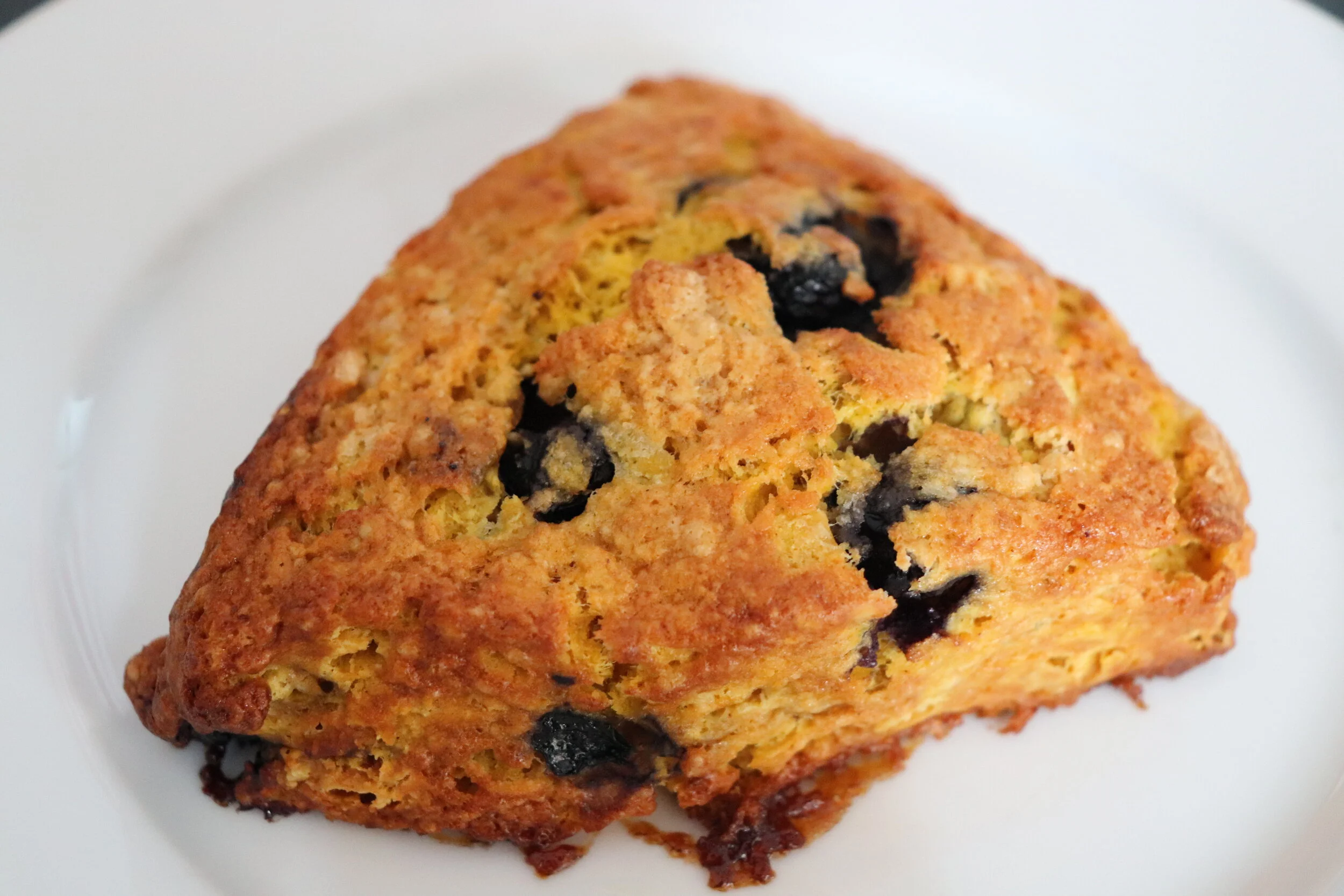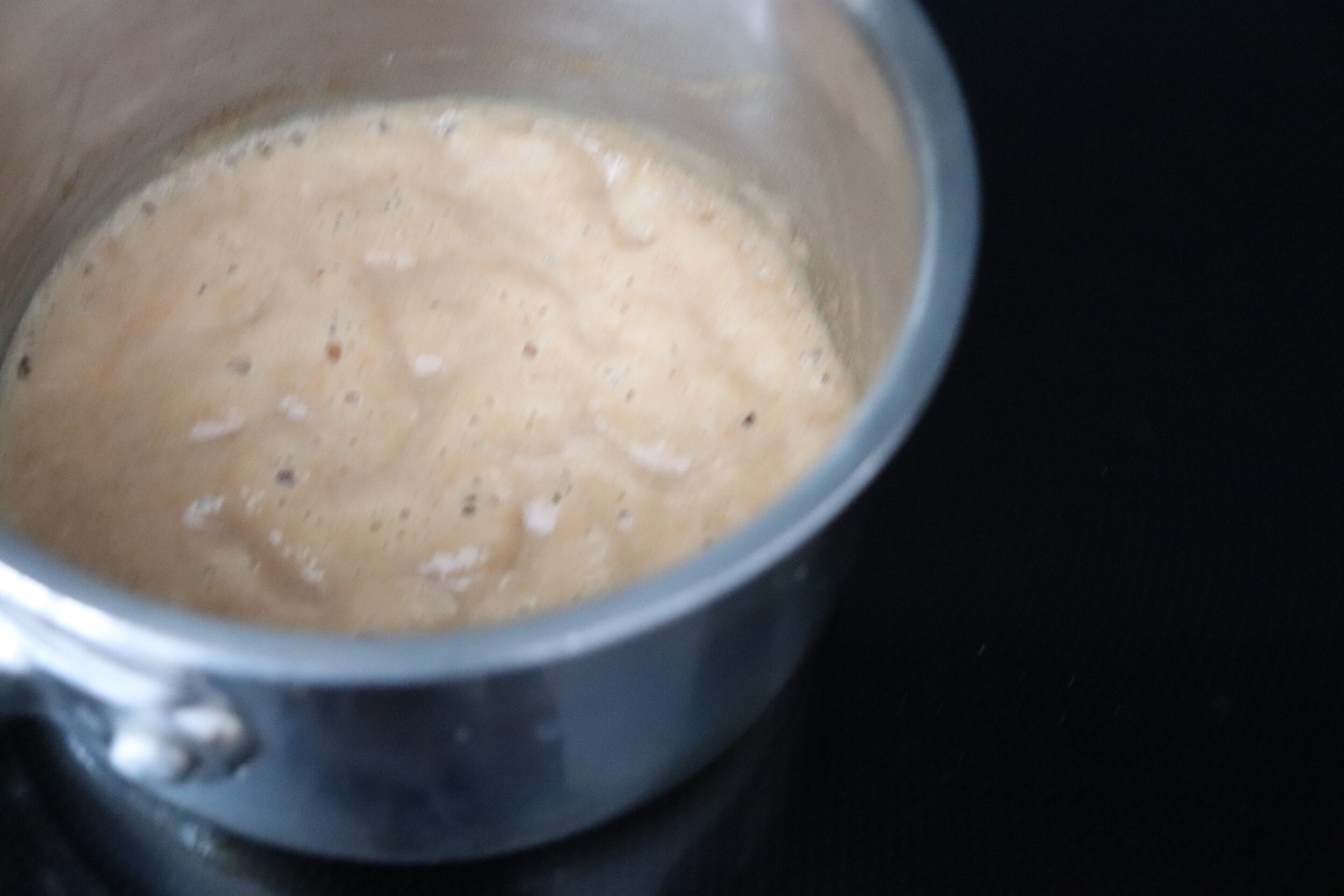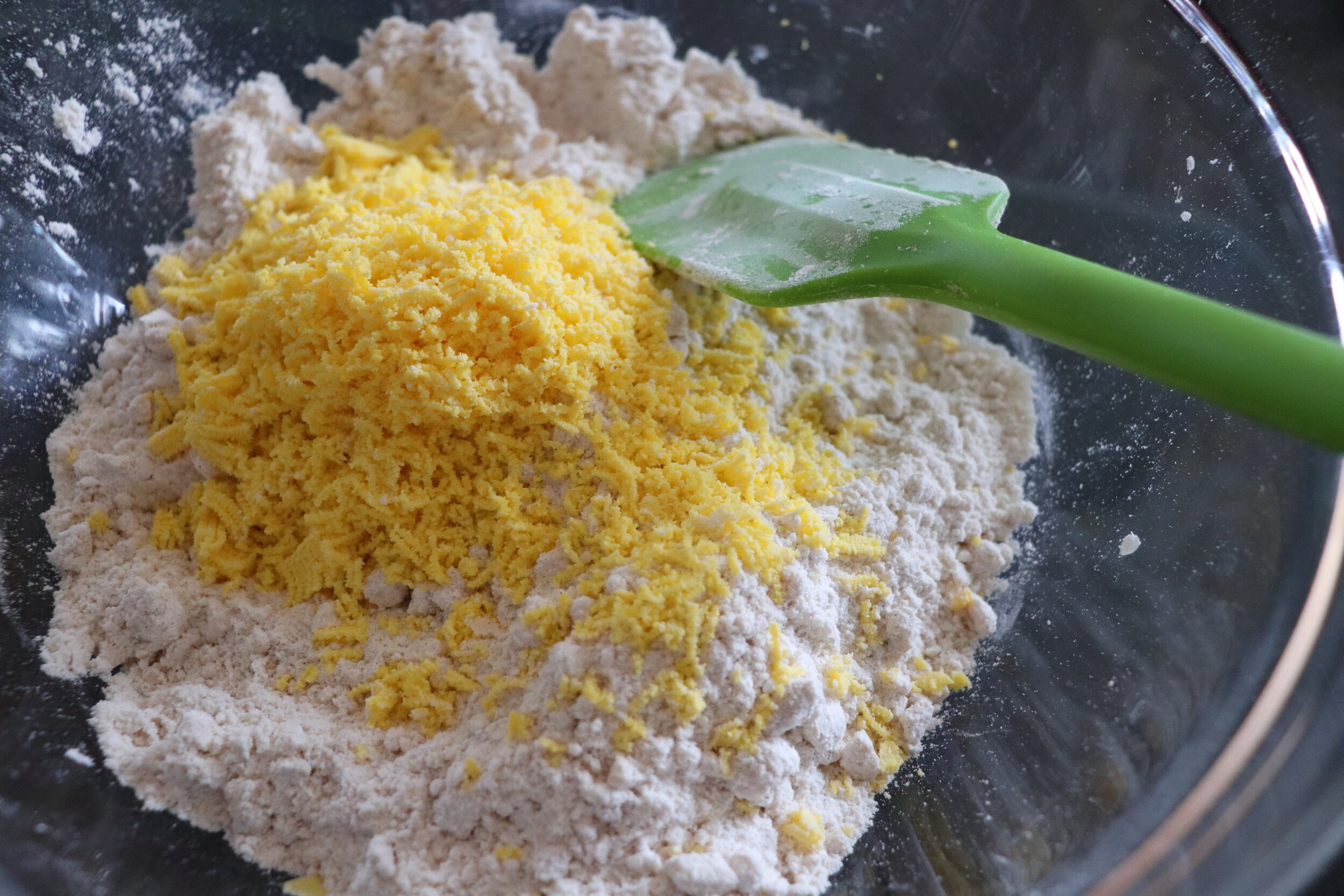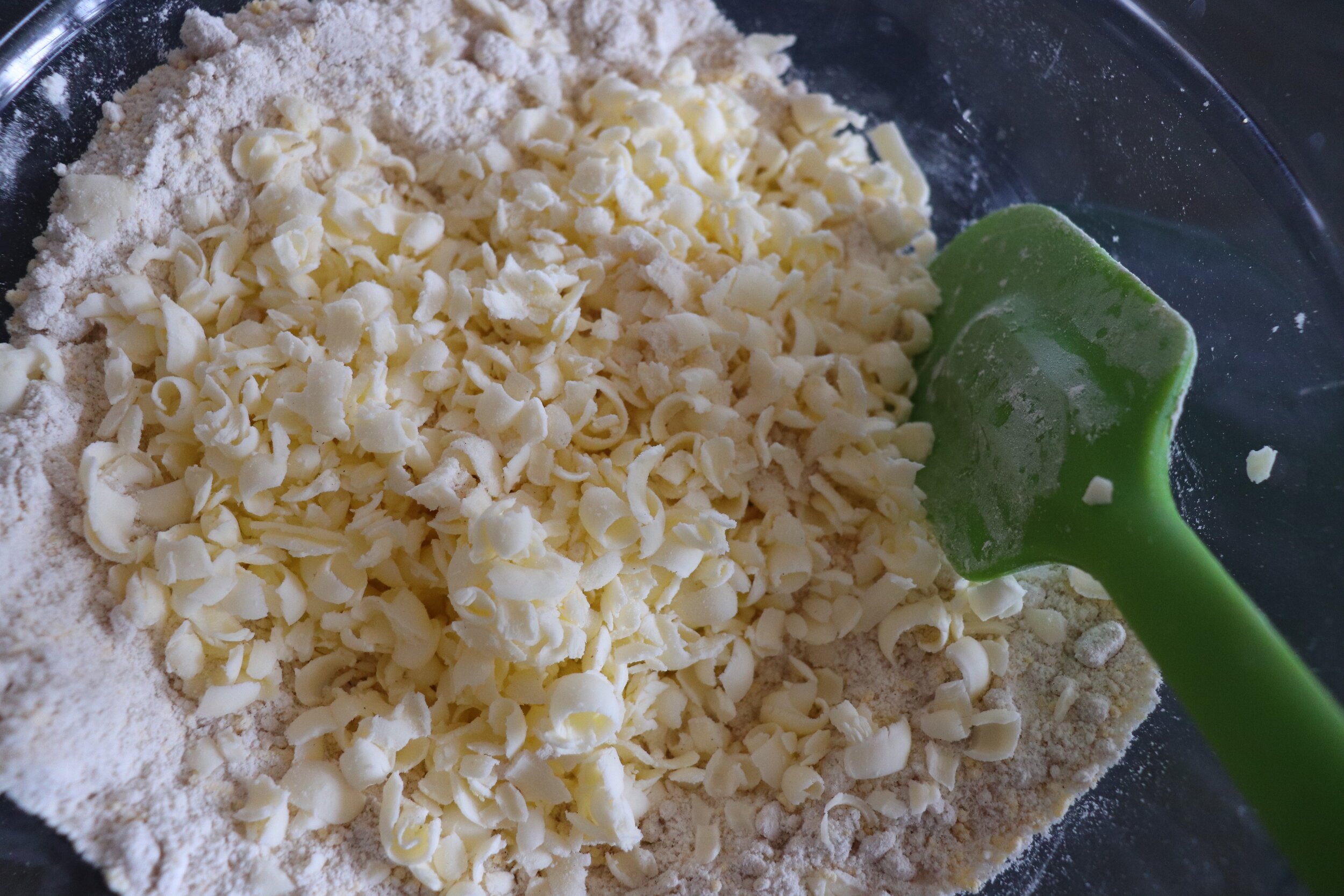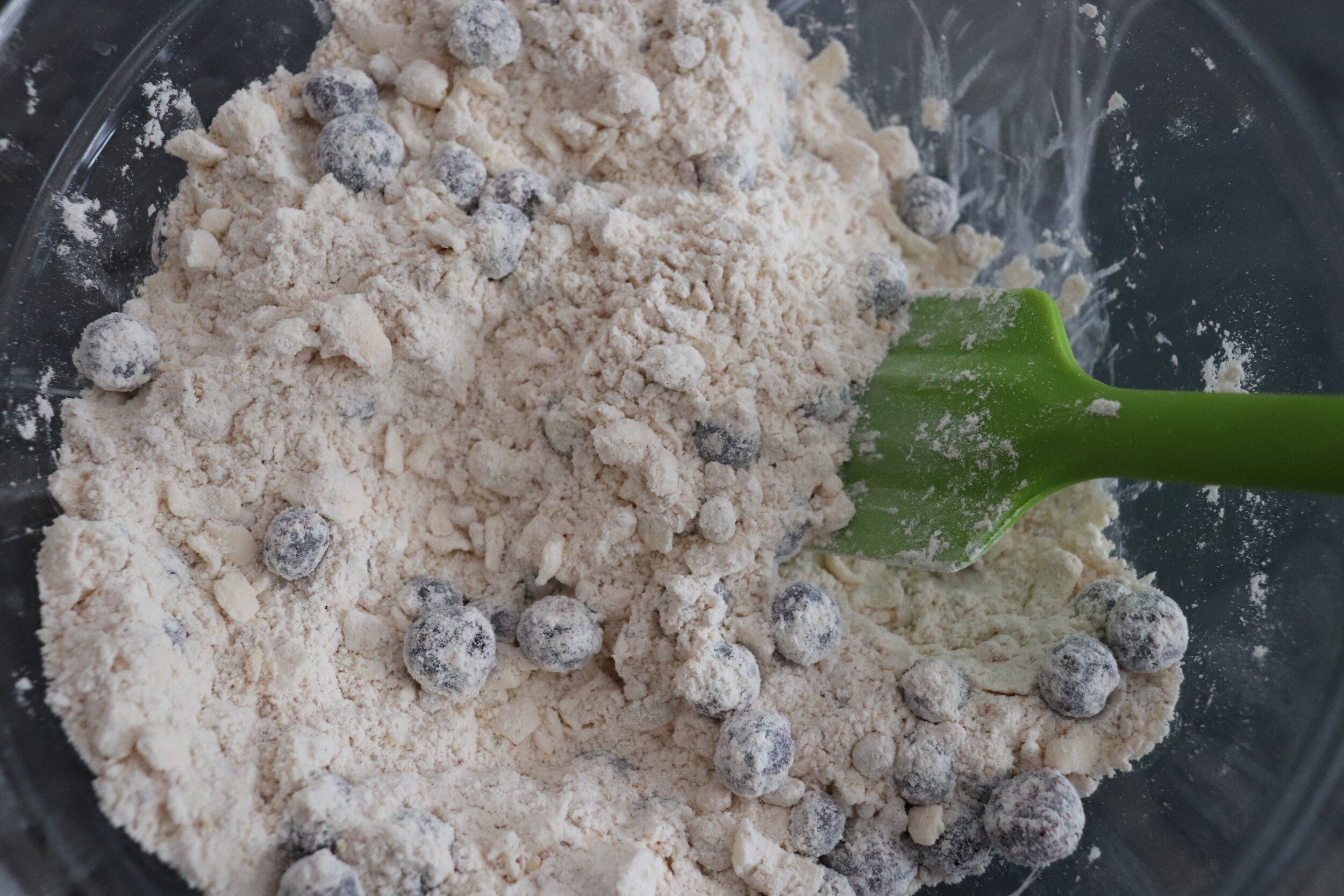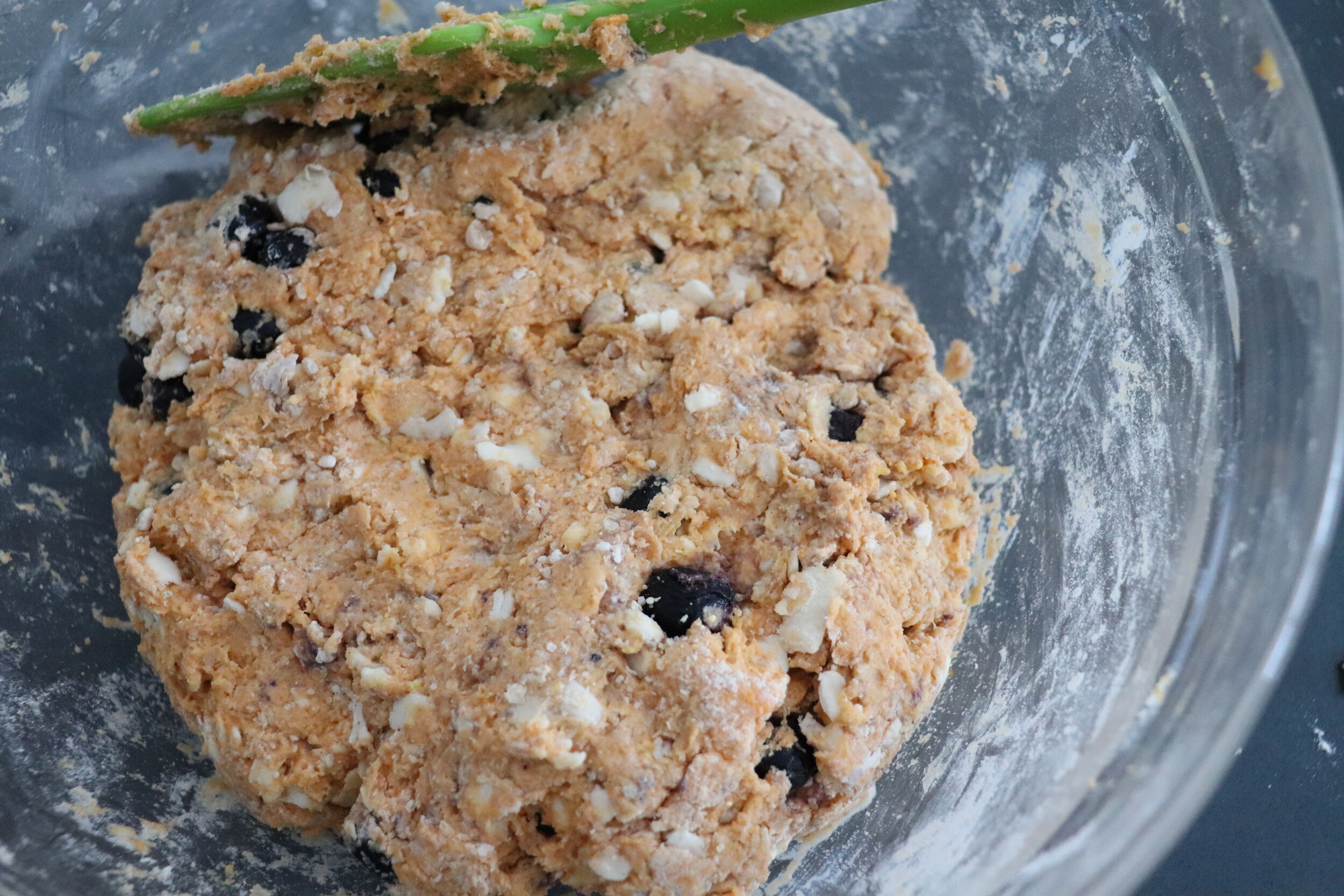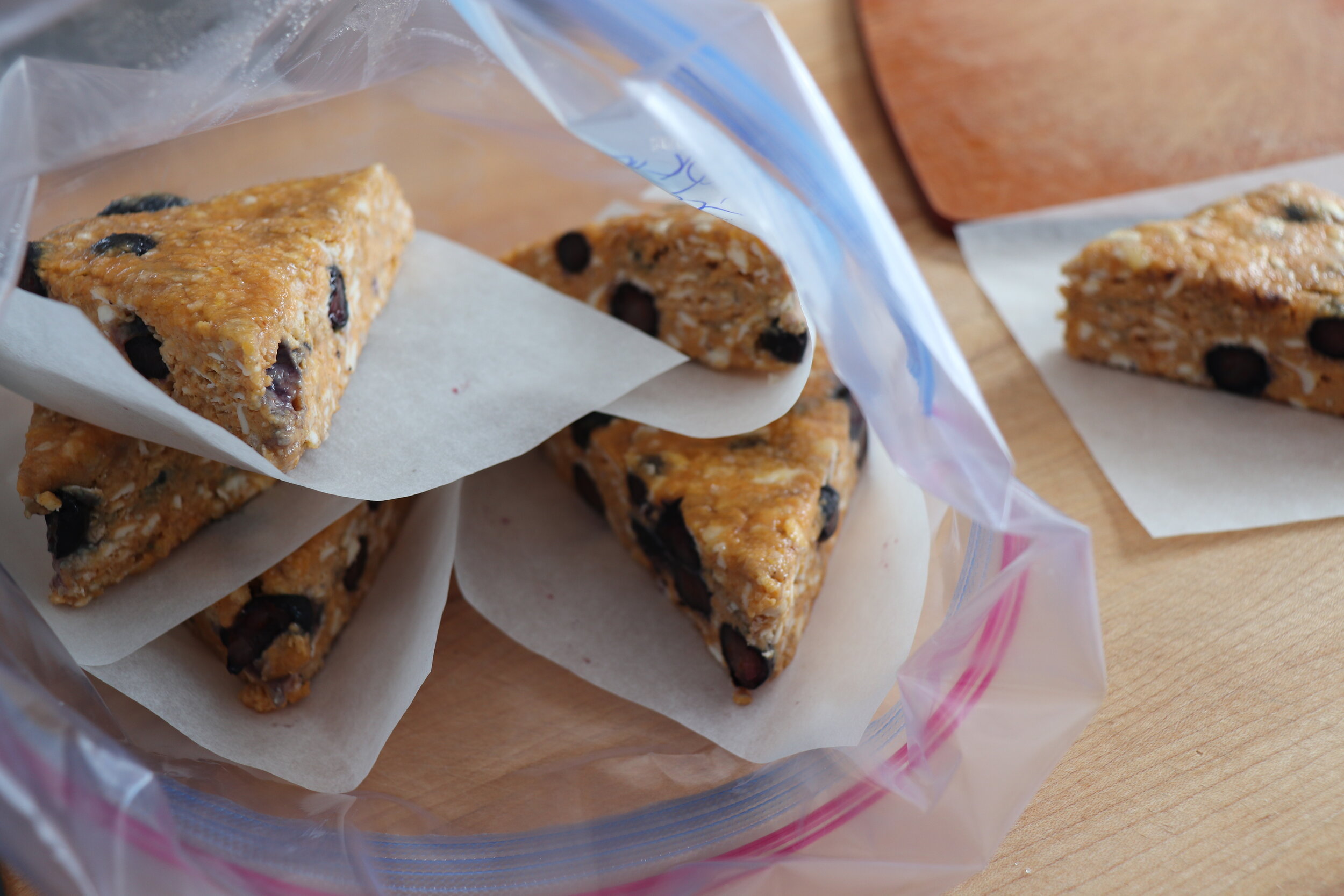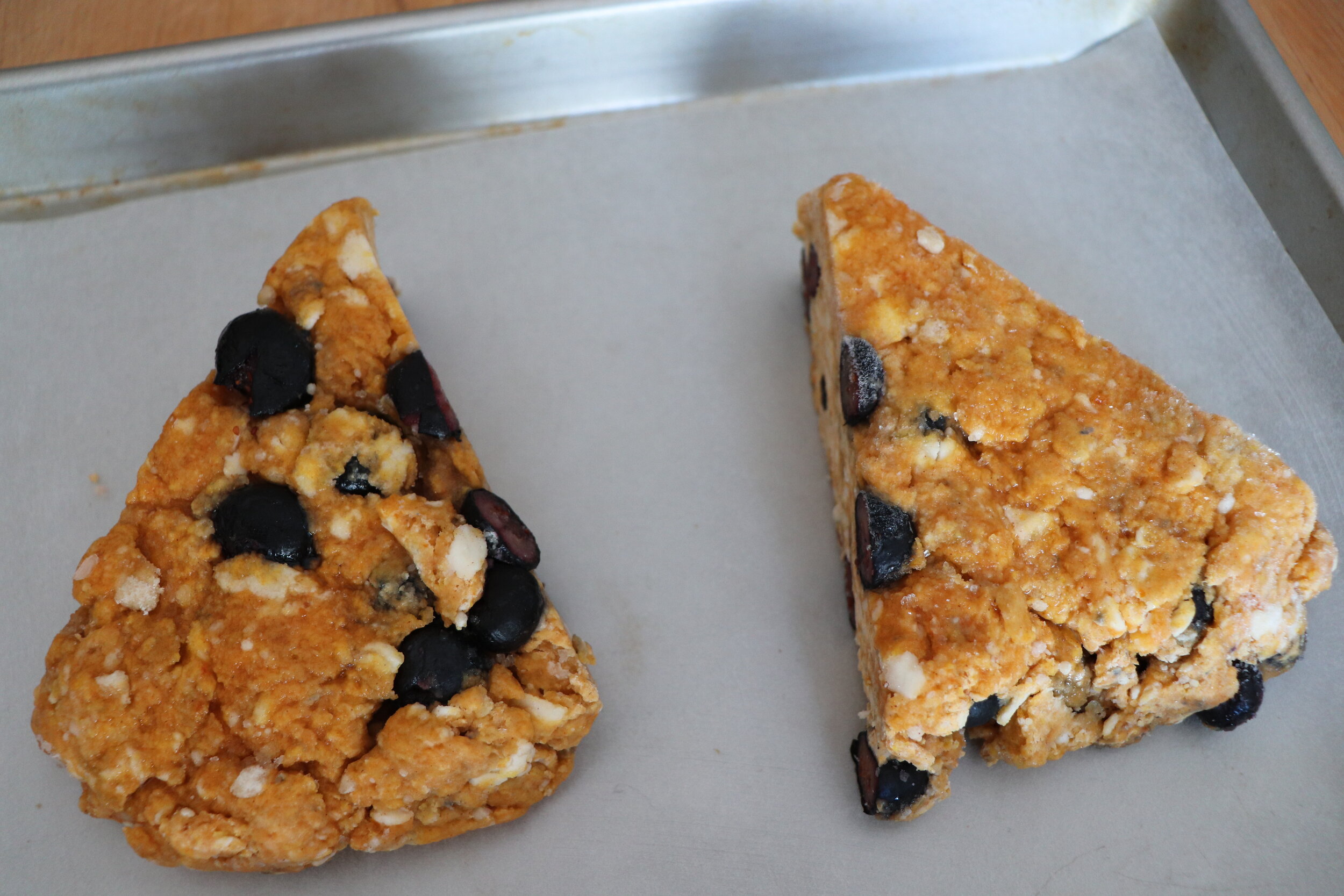Pumpkin Blueberry Scones
I categorize scones into two basic groups. First, there are what the rest of the world refers to as “American style scones.” Over here, we just call them “scones” as if they are the original scone, but I know they’re not. American scones are pastries, meaning they are made by cutting cold fat into flour, and then adding liquid. Second, there are British and Scottish scones, which are more caky, a bit drier, and often served with clotted cream and jam. The visual appearances of these two types of scones are distinct too. An American scone is typically a wedge shaped pastry, whereas a British scone is usually round and biscuit shaped. This, of course, is not always true, but it usually is. I usually stick to the rule of wedges and circles whenever I make scones, as this lets the consumer know what to expect. As an avid consumer and baker of scones, I do love them both very much. But today’s recipe will highlight an American scone.
Before the pandemic hit, I went out most mornings for coffee and a scone. But last March—when the pandemic left me housebound—I got into the habit of making scones at home. I’ve always made scones, but sporadically… usually only for special occasions. But nowadays, I make a whole lot of scones. I’ve experimented with many different flavors, but the pumpkin blueberry scone is one of my personal favorites. My local bakery sells pumpkin blueberry scones, but only for about six weeks in the fall when pumpkins are in season. Now, my question is, why should pumpkin only get six weeks? Ever since I began making my own pumpkin blueberry scones from home, I no longer go into grumpy mourning at the end of pumpkin season.
These scones are best baked when frozen, as they stay in the oven longer and develop a crispy brown exterior without becoming overcooked and dry. Of course, they can be baked as soon as they are made, but the exterior will be a bit lighter in color and texture. Another very important reason I freeze raw scones: I believe that a scone ought to be eaten the day it comes out of the oven, but how many households can (or, more importantly, should) eat 6-8 scones in a day? On any given day, I usually have 3-4 varieties of scones in my freezer. That way, I can decide exactly what I want.
This particular scone recipe contains one sieved hard boiled egg yolk. This is not my invention; it was a technique pioneered by James Beard’s mother when making shortcakes. I first read about the use of a sieved hard boiled egg yolk in Food52’s Genus Recipes Cookbook. People buy cookbooks for a multitude of reasons. Maybe it was written by a favorite author or a chef from a favorite restaurant, or maybe a friend recommended it. I buy cookbooks for all of those reasons, but especially for the reason I purchased Genius Recipes. When I browse through a cookbook and I see an unusual technique used on a common food, well, that usually gets my attention as well as my purchase.
I use one hard boiled egg yolk for added richness, and one raw egg for a bit of lift.
Some things to keep in mind before you begin:
The manhandling necessary for mixing raw berries into scones may cause the berries to burst which often adds more liquid than the dough can handle, so it’s best to freeze the berries for a few hours before using them. This also helps keep the dough cold and the butter bits intact. Wash the berries, spread them out to air dry, and then freeze them on a parchment lined cookie sheet.
Frozen butter is the way to go when making pastry, so I begin the scone making process by using the large holes of a box grater to grate a stick of butter onto a sheet of parchment paper. Then I pop the parchment paper/butter into the freezer for a flash freeze.
I like the acidity buttermilk brings to a recipe, as it works well with baking soda; however, buttermilk lacks fat (as it’s the byproduct of making butter - you take the fat out of cream and you’re left with nonfat buttermilk). I like using cream when making scones, so I add a bit of vinegar to punch up the acidity factor.
Starting with a butter and flour roux gives a scone a pleasantly crunchy exterior. Do not skip this step; it makes a big difference.
Most recipes begin by adding baking powder and/or baking soda to the flour but this is not done here so as to avoid the heat of the roux activating the soda. Add the baking powder and baking soda after incorporating the roux.
This recipe uses ½ cup sugar, which can be combined in its entirety with the dry ingredients. However, I prefer to split the sugar up by putting 60% in with the dry ingredients, and 40% as a coating on the outside. The sugar coating melts slightly and after the scone bakes makes a delicious crunchy glaze.
Make no mistake about it, making scones is a messy business. It is best done quickly before the mixture warms up and the butter softens. Trying to work quickly invariably leads to flour going everywhere, including the floor. Organizing your ingredients does help a bit, but keep in mind that slowing down a little is also fine. Your scones will be delicious either way, even if the dough warms up a little.
Normally when baking on parchment paper, greasing the pan is not necessary; however, if I’m making scones that contain berries, I grease the parchment as the berries can really adhere when they heat up and burst. I recommend using a baking sheet with sides, as butter can seep out of the dough while baking.
Pumpkin Blueberry Scones
Makes 8 average sized scones or 6 hearty scones
3 cups all-purpose flour - 12.9 ounces or 366 grams - divided (see note on how I measure flour here)
1 stick cold butter - 8 Tablespoons or 4 ounces or 113 grams - grated and frozen
2 tablespoons butter - 1 ounce or 28 grams
1 tablespoon baking powder - 0.4 ounce or 11 grams
¼ teaspoon baking soda - 1.5 grams
¾ teaspoon kosher salt - 3 grams
1 teaspoon cinnamon - 0.1 ounce or 2 grams
½ teaspoon powdered ginger - 1 gram
½ cup granulated sugar - 3.5 ounces or 99 grams - divided
1 hard boiled egg yolk
1 cup frozen blueberries - ~5.5 - 6 ounces or 156-170 grams
½ of a 15 ounce can of pure pumpkin puree (NOT pumpkin pie filling!) - 7.5 ounces or 213 grams
¼ cup light or whipping cream - 2 ounces or 57 grams
½ teaspoon rice vinegar or substitute cider or white vinegar
1 large whole egg - lightly beaten
Begin by prepping the ingredients as follows:
If you haven’t already grated and frozen one stick of butter, begin there.
Freeze blueberries.
Add 3 cups of flour to a large bowl (the bigger the better as it will make mixing much easier later). Remove ~3 Tablespoons (0.9 ounces or 26 grams) of flour to a small prep bowl. Set aside.
Add 2 Tablespoons (1 ounce or 28 grams) butter to a small saucepan.
Measure out ½ cup (3.5 ounces or 99 grams) sugar. Add ~60% of the sugar (2.1 ounces or 5 Tablespoon or 59 grams) to the large bowl with the flour. Place the remaining sugar (1.4 ounces or 3 Tablespoon or 40 grams) in a small prep bowl to be used later as a coating. Alternatively, you may add the entire ½ cup sugar to the large bowl of flour if you aren’t making the shell coating.
Add the cinnamon, ginger, and salt to the large bowl of flour and sugar.
In a separate container, combine the cream and vinegar. Stir in the beaten egg.
Spread out a large piece of plastic wrap on the counter for the completed dough. Sprinkle ~½ of the reserved sugar into a ~9 inch circle on the plastic wrap.
Make the roux: melt 2 tablespoons (1 ounce or 28 grams) of butter. Whisk in the reserved 0.9 ounces (26 grams) flour. Whisk while cooking for 3-4 minutes until bubbly. Add the roux to the large bowl containing the flour/sugar mixture. Using one hand, incorporate the roux into the flour, pinching to distribute evenly. I only use my less dominant hand for most of the combining. Keeping one hand clean until the final stages really helps.
Add the baking powder and baking soda to the flour mixture and stir to combine. Press the hard boiled egg yolk through a small sieve into the flour mixture. Stir to combine.
Add the grated frozen butter to the flour mixture, breaking up any large clumps of frozen butter you see. Stir it in, being careful not to over combine.
Stir in the frozen blueberries.
Add the pumpkin puree / cream mixture one half at a time, using a rubber spatula to stir. The dry bits of flour tend to congregate at the bottom of the bowl, so add the rest of the pumpkin mixture to the bottom. After I have done my best to combine with a spatula, I use both of my hands to incorporate all of the dry bits into the dough. Be forewarned—it is quite messy. Flip over the dough a few times to fully incorporate the dry bits. Once it is fully combined, gather the dough into a cohesive mass and place it onto the sprinkled sugar on the plastic wrap. Press the dough into a ~9“ disk. At this point, I like to take a short break and wash my hands. Sprinkle the remaining sugar across the top of the dough disk. Press the sugar in a bit. At this point, the blueberries have begun to melt ever so slightly, releasing enough moisture to combine with the sugar and form a bit of a glaze. Wrap up the disk with the plastic wrap, and place it in the freezer to partially harden. Alternately, you may cut the scone into wedges and bake in a preheated oven.
After 1-2 hours, remove the dough disk from the freezer. Unwrap and slice into 6-8 portion-sized wedges. Place the wedges on small squares of parchment paper, stack, and store in a Ziploc bag for easy access. Place bag into the freezer.
To bake, preheat oven to 375°F (190°C) (bake) or 355°F (179°C) (convection bake). Remove as many wedges as desired, place on a greased parchment lined baking sheet with sides and bake as follows:
Frozen Scones:
Eighths: 25-30 minutes
Sixths: 30-35 minutes
Non Frozen Scones:
Eighths: 15-20 minutes
Sixths: 20-25 minutes

